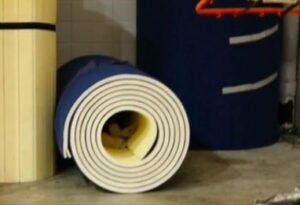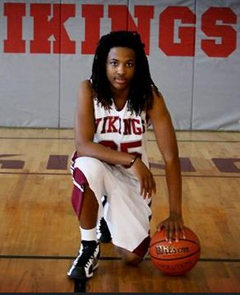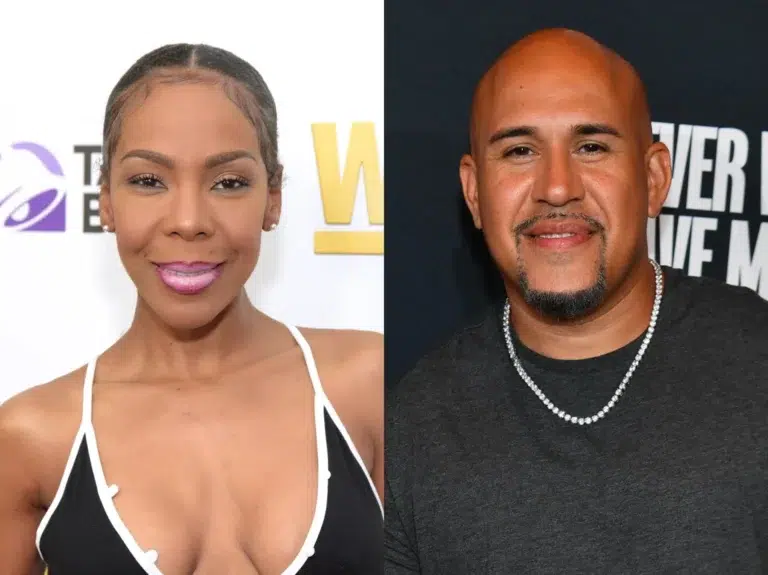2013 controversial death in Georgia, United States, This is the Death of Kendrick Johnson.
On January 11, 2013, the remains of Kendrick Johnson (October 10, 1995 – January 10, 2013) were discovered concealed within a vertically rolled-up mat in the gymnasium of Lowndes High School in Valdosta, Georgia, United States, where he was a student. Following an initial investigation and autopsy which ruled Johnson’s death as accidental, his family enlisted a private pathologist to perform a second autopsy. The results revealed that Johnson’s death was caused by blunt force trauma. On October 31, 2013, the U.S. Attorney for the Middle District of Georgia announced the opening of a formal review into Johnson’s death. Subsequently, on June 20, 2016, the Department of Justice declared that it would not pursue any criminal charges in connection to Johnson’s death.
Keep in mind the following information: Johnson’s family has filed a $100 million civil lawsuit against 38 individuals, alleging that his death was a murder and that the respondents were involved in a conspiracy to cover up the homicide, which they claimed involved two sons of an FBI agent.[6] However, it’s worth noting that this lawsuit was subsequently withdrawn. Georgia Judge Richard Porter has ordered the Johnsons and their attorney to pay more than $292,000 in legal fees to the defendants, accusing them of fabricating evidence to support their claims.
Initial investigation
On January 11, 2013, Kendrick Johnson’s body was found in the gymnasium of Lowndes High School in Valdosta, Georgia, positioned headfirst in the center of a vertical rolled-up wrestling mat. Fellow students made the discovery after climbing to the top of a cluster of mats, which were nearly 6 feet tall and 3 feet wide. The Georgia Bureau of Investigation (GBI) autopsy conclusively determined that Johnson died from positional asphyxia, leading Lowndes County investigators to rule the case as an accidental death.
It is believed by authorities that Johnson fell into the mat while searching for a shoe and tragically died after being unable to escape. Investigators were informed by three students at Lowndes High School that it was a common practice for some students to stow their shoes behind or under the rolled-up mats. Johnson was found without wearing shoes. Additionally, a fellow student disclosed that he had shared a pair of Adidas shoes with Johnson and that after gym class, Johnson would consistently
“go to the mats, jump up, and toss the shoes inside the middle of the hole.”
The investigation into the death of Kendrick Johnson was led by Lt. Stryde Jones of the Lowndes County Sheriff’s Office. According to Lt. Jones, the investigation had not uncovered any credible evidence to suggest that Johnson’s death was anything other than an accident. However, Johnson’s family raised doubts about this conclusion. In response, they commissioned an independent autopsy by William R. Anderson of Forensic Dimensions in Heathrow, Florida, on June 15, 2013. Anderson’s examination revealed evidence of blunt force trauma to the right neck and soft tissues, leading him to conclude that Johnson’s death was not accidental.
Subsequent events and legal actions
Following the release of the private pathologist’s opinion, Johnson’s family firmly declared that they believed Johnson was the victim of foul play. They engaged the services of attorney Benjamin Crump. On October 31, 2013, U.S. Attorney Michael J. Moore declared that his office would initiate a thorough review of Johnson’s death. Although Crump’s application to practice law in Georgia on behalf of Johnson’s parents was pending, he opted to withdraw from representing the family and is no longer involved in the case.
The Johnson family wasted no time and filed a legal action to initiate a coroner’s inquest into his death. When the judge in that case postponed a decision, pending the outcome of the U.S. Attorney’s review, the family insisted that the governor of Georgia immediately authorize the inquiry instead. In a strong display of unity, the family, along with the NAACP and other civil rights activists, organized a rally at the Georgia State Capitol in Atlanta. Despite the governor’s office releasing a statement indicating that they would wait for the report of the U.S. Attorney, the family and supporters remained resolute in their demand for accountability.


Body
The independent autopsy discovered that sometime after Johnson’s body was retrieved from the mat and had given through a funeral home, it had been crammed with newspapers. The funeral home that handled the body following the FBI’s autopsy stated that they did not receive Johnson’s internal organs from the coroner. According to the funeral home owner, the organs were allegedly destroyed through a natural process and discarded by the prosecutor before the body was returned to Valdosta.
“destroyed through natural process” and “discarded by the prosector before the body was sent back to Valdosta,”
According to the funeral home owner, That left a gap which the funeral home filled in. The funeral home owner worded that it is traditional practice to fill a gap in this manner and that cotton or sawdust may also be engaged for this sense. Johnson’s family filed a complaint with a regulatory body against the funeral home operator.
A succeeding examination by the Georgia Secretary of State‘s headquarters discovered that the funeral home did not follow “best practice” and that other material was “more acceptable than newspaper.” However, the analysis cleared the funeral home of any misconduct. A representative for the Secretary of State said that the investigation found that the funeral home “didn’t violate any rules“. The Johnson family afterward filed a civil lawsuit against the funeral home, aiming for financial damages.
Johnson’s family requested that his body be disinterred for a second time and was given approval by Valdosta city administrators. On June 22, 2018, Johnson’s body was indeed disinterred.
Surveillance tape
 Surveillance footage of Johnson entering the gymnasium shortly before he died
Surveillance footage of Johnson entering the gymnasium shortly before he died
Back in November 2013, there were 290 hours of surveillance footage from 35 cameras that surrounded the gym room which was released to CNN following a court request. According to a forensic analyst hired by CNN, it was discovered that two camera tapes had an hour and five minutes of missing footage, while another set had a gap of two hours and ten minutes. The investigation revealed that some coverage lapses occurred due to unsynchronized camera systems. The time stamps from different camera systems varied by as much as twenty minutes for the same time period. This made it seem like there were gaps in the footage when there were not. Some footage was missing because the cameras were only supposed to record when they detected motion, but this function didn’t always work. The cameras were set up to turn on and off when they sensed a change in light pixels. The area where Johnson’s body was found, where the gym mats were stored, did not have any surveillance cameras.
Attorneys representing the Johnson family have raised concerns that the camera footage may have been tampered with as part of a cover-up. However, an analysis of the camera systems by the Valdosta Daily Times has sought to clarify the anomalies, casting doubt on the notion of a cover-up. The president of the Valdosta-Lowndes County chapter of the Southern Christian Leadership Conference and the former lead investigator for that chapter have both indicated that they believe the attorneys for the Johnsons have not been entirely truthful in their statements. They assert that there was no cover-up in this case.
Legal actions
The family of Johnson sued the Lowndes County Board of Education, its superintendent, and the principal of Lowndes High School. They claimed that Johnson was violently attacked and injured, which led to his death on January 10, 2013, and caused mental suffering. The lawsuit alleged that the defendants neglected their duty and violated Johnson’s right to equal protection based on race. It said that the defendants ignored previous attacks on Johnson and didn’t effectively watch over student activities.
In August 2014, Ebony magazine was sued for $5 million after publishing articles that suggested two students might be linked to Johnson’s death. The magazine used fake names but provided accurate details about the boys, such as their father being an FBI agent. The information came from an anonymous email to the sheriff’s office. In their lawsuit, the parents of the boys said their sons weren’t involved in the death, were not suspects, and were harassed because of the article.
In January 2015, Johnson’s family filed a $100 million civil lawsuit in the Superior Court of DeKalb County against 38 individuals. The lawsuit alleged that the FBI agent ordered his two sons and a classmate to attack Johnson and that his death was a murder. Among the respondents were three of Johnson’s classmates, local, state, and federal officials, the school superintendent of Lowndes County, the Valdosta-Lowndes crime lab, the police chief of Valdosta, many sheriff’s deputies, the city of Valdosta, the state medical examiner, the GBI, and five of its agents, and one FBI agent. Jim Elliott, the Lowndes County Attorney, stated that the allegations were “unfounded” and “baseless” and that any response would be made in court. All local Superior Court judges recused themselves from presiding over the case, preventing the lawsuit from being filed and heard in Lowndes County, citing their close proximity to the accused.
Before the lawsuit was filed, U.S. Attorney Michael J. Moore stated that a federal investigation was still ongoing and had proven to be more complicated and time-consuming than expected. After Moore resigned in 2015, the case was transferred to the Northern District of Ohio under U.S. Attorney Steven Dettelbach. Shortly after receiving the case, Dettlebach also resigned. Despite these resignations, the Department of Justice investigation continued.
In November 2015, the Department of Justice filed a motion in the civil case requesting to intervene and pause the case. The U.S. Attorney stated that allowing evidence discovery in the civil suit to continue would have a negative impact on the federal investigation, which had expanded into investigating potential obstruction and grand jury witness tampering. Even though the Justice Department’s motion was denied, Johnson’s parents withdrew their own wrongful death lawsuit, stating that they planned to refile it after the conclusion of the federal investigation. Subsequently, they were sued for over $850,000 in attorney fees and $1,000,000 in defamation damages.
The Department of Justice decided not to file criminal charges related to Johnson’s death on June 20, 2016. They stated that after a thorough investigation, there was insufficient evidence to prove that anyone willfully violated Kendrick Johnson’s civil rights or committed any other federal crime. Additionally, on August 10, 2017, a Georgia judge ruled that Johnson’s family and their attorney had to pay more than $292,000 in legal fees to the respondents in their civil suit. The judge stated that there was no evidence to support the family’s claims that specific individuals were involved in concealing the cause of Johnson’s death.
On March 10, 2021, Lowndes County Sheriff Ashley Paulk officially reopened the case of Kendrick Johnson’s death. Sheriff Paulk offered a $500,000 reward from his own funds for information leading to the conviction of Kendrick Johnson’s killer. He and two other investigators spent 13 months reviewing the case before reaching their conclusions. In January 2022, the second investigation was closed with no charges filed. Sheriff Paulk stated that there was no homicide, cover-up, or conspiracy in Kendrick Johnson’s death, and that it was simply a tragic accident. He also mentioned that he does not consider the case to be a homicide and stated that two brothers, previously named in legal actions, are not suspects. In an interview, Sheriff Paulk mentioned that someone involved in the case had said, “I’m going to move on. This is going to make me famous.” Kendrick Johnson’s father expressed doubts about the thoroughness of Sheriff Paulk’s conclusions, stating that he could not have delved deeply enough into the files.
The Talk Lounge would like to take a moment for the family and friends of Kendrick Johnson. We never forget those who haven’t gotten justice or those who deserve peace.








